What is the best way (practice) to deal with a Linq Database DataContext in C# WPF. Use a global application wide DataContext which is shared in every viewModel or to open for every transaction a own DataContext?
Based on information on msdn and StackOverflow it is recommended to create a new DataContext for every transaction. But in my case I would like to lookup data in one viewmodel and passing them to another viewmodel to alter values. Creating a new DataContext in the altering viewmodel results in mismatching object states. (The selected object in the first viewModel does not exist in the DataContext of the second viewModel, since the object is bound to the older DataContext) Sequence diagram for better understanding
The "EditViewModel" is not able to edit the passed value with the new DataContext, because the object is related to the "LookupViewModel's" DataContext.
I thought about passing the DataContext as well. But since the LookupViewModel has no time limitation when its going to call an editViewModel, the DataContext could get out of date. (And a refresh would be essential). Furthermore, sometimes I pass from different viewModels from different DataContexts values to one editViewModel.
How am I able to tread objects from a DataContext in another DataContext without receiving any exceptions? Or shouldn't I completely reconsider the whole application design?
